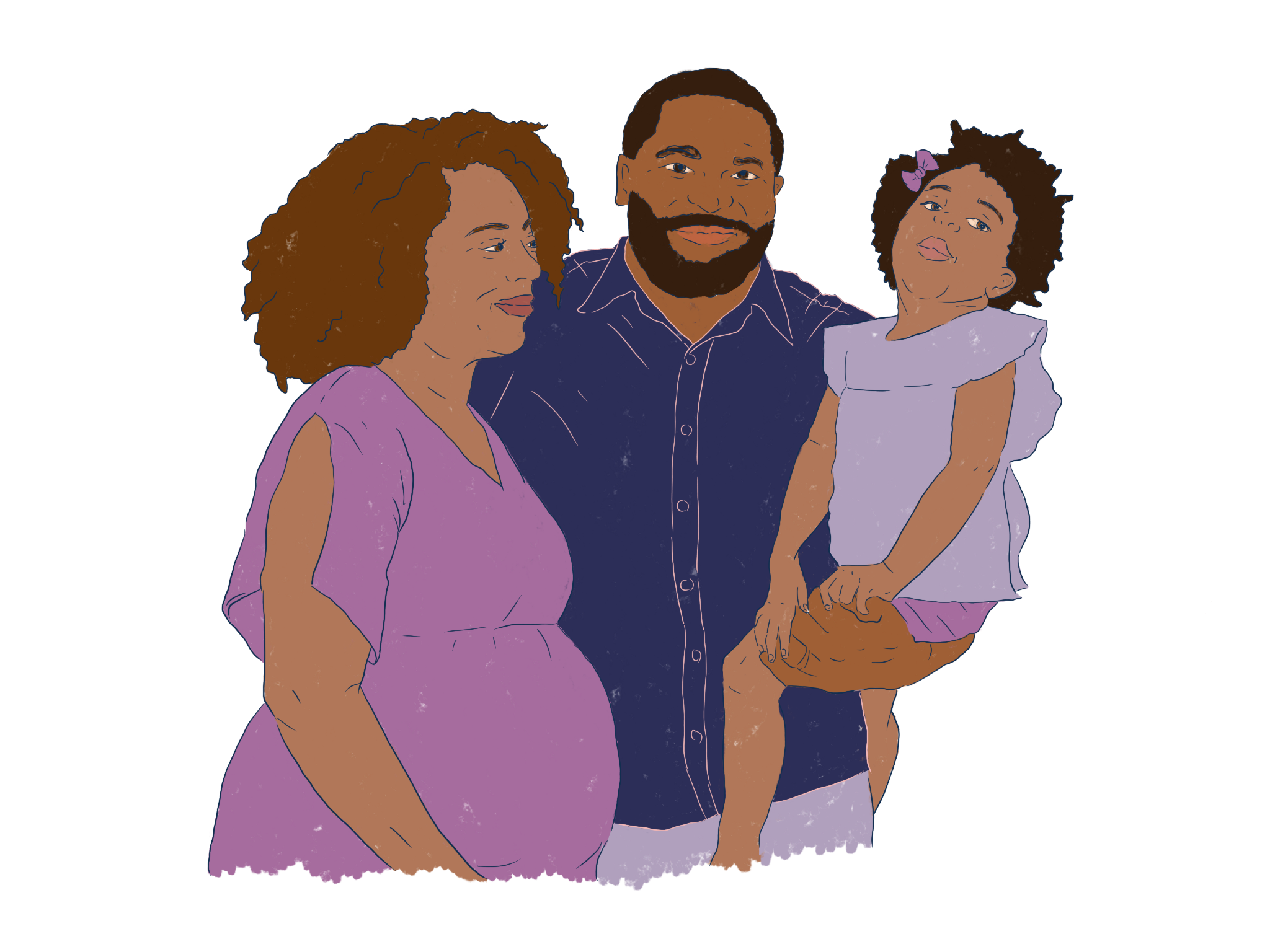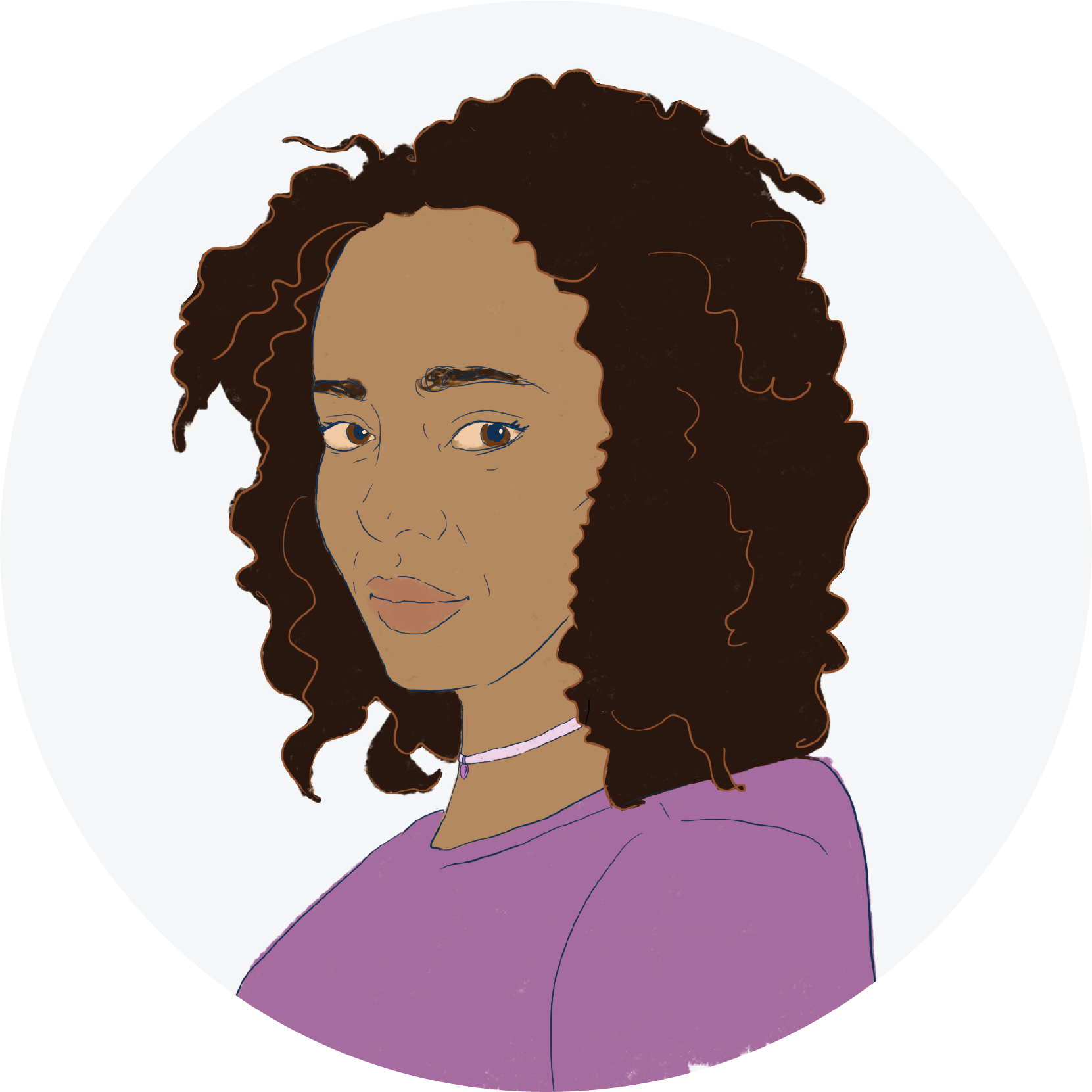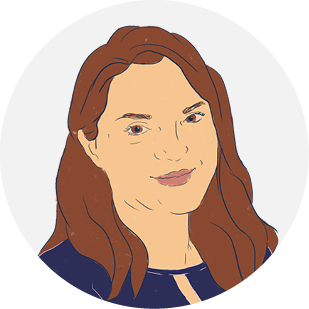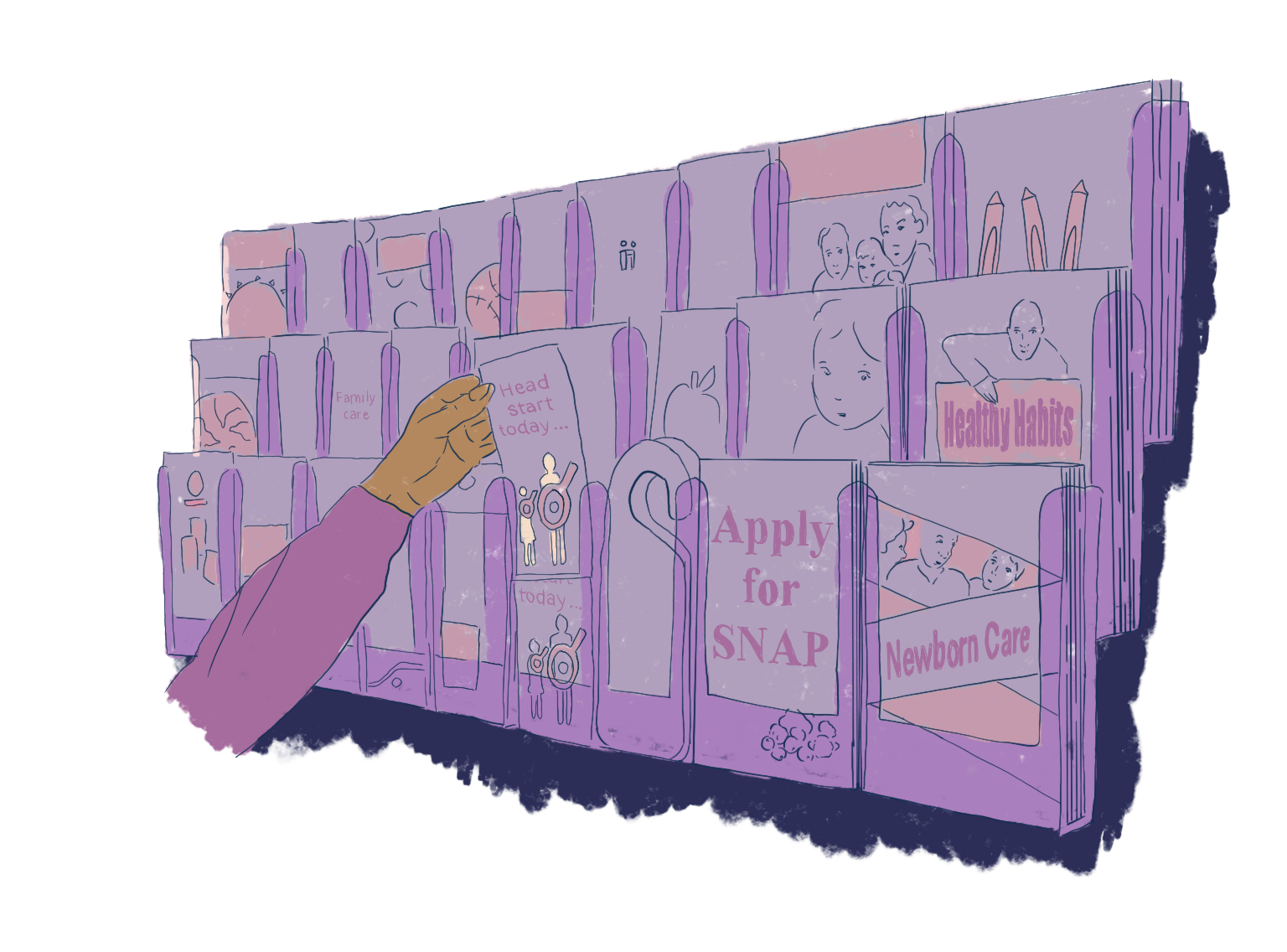I wish I had [support] when I was pregnant, in order to understand what all the programs mean. I still don’t know all the things that are available to me.
Where we are
For parents of all income levels, carrying and delivering a child is one of the most significant experiences of their life — but the stresses and burdens are greater for low-income families.
Many eligible low-income families are not enrolled in the combination of supports that exist to help them thrive after a baby is born. Too often, the difficulty of knowing what programs exist and navigating siloed, complicated application processes results in critical benefits (such as health care, food, affordable childcare, and early childhood programs) not reaching the families who need them most.

1 Source: Centers for Disease Control and Prevention

Our approach
To start, we listened to people’s stories.
The Life Experience research team spoke with people nationwide about this moment in their lives and where the government process could have been simpler and more helpful. The listening sessions captured honest conversations about peoples' experiences, candid feedback on what could have worked better, and what really made a difference for them. Their stories have been combined and are represented here through illustrations. The quotes are real, but names have been changed.












This research took place virtually and in-person, in English and in Spanish. 121 people, from 10 states, participated in the research. This group included single parents, people facing housing insecurity and homelessness, people who are justice-involved, and people with disabilities.
The team spoke with:
- 32 members of the public
- 12 frontline staff
- 13 state/program administrators
- 64 subject-matter experts
Discovery insights
Framing for collective thinking about customer pain points
How might we factor in the physical goods that families need in the first year after childbirth to help people start their journey with essentials in hand?
How might we empower organizations and staff in local communities to help families have greater awareness and streamlined access to available benefits?
How might we help people have the right information at the right time about enrolling in benefits and the process to renew them as needed?
Design Phase
Designing customer-centered solutions
View progress on our milestonesIn the 2024 design phase, the portfolio is running three pilot projects:
- Piloting an “alumni peer navigation services” approach for families navigating supports aims to demonstrate the “benefits bundle” proof of concept through an Alumni Peer Navigator (APN) Service.
- Piloting a “newborn supply kit” at the time of birth aims to form collaborations with new delivery partners for 2024 pilots and initiate future year pilots.
- Piloting a text message notification for critical updates will continue collaborating with the city of Norfolk (Virginia) Department of Human Services, and aims to launch a second pilot.
The project connects families welcoming a new baby to supportive services through an Alumni Peer Navigator program that is convenient, culturally competent, and appropriately tailored to specific communities.
The work includes collaborating with families and staff to design the service, training, and tools through an iterative process; and hiring and supporting Healthy Start alumni in their new alumni peer navigator (APN) role to help new families connect with resources and social support.
Project objectives
Help new families access benefits and care, reduce maternal stress, and increase maternal social connectedness.
Increase trust and improve the experience of participating in the Healthy Start program, leading to a better connection to resources for issues including substance use disorder, domestic violence, and mental health.
Create a viable workforce pathway for mothers to engage in meaningful yet flexible work.
Strengthen relationships across support systems in communities and ensure families are aware of and able to use services available at the Federal, State, local, Tribal, or Territory levels.
Updates
Since July 2023, Alumni Peer Navigator (APN) services have launched at six Healthy Start (HS) sites nationwide, enabling fifteen navigators to serve 200+ families across the United States in tribal, urban, and rural areas. The team conducted site visits to connect with families and the APNs serving them, gathering insights through interviews. Feedback revealed high satisfaction with the pilot, with 81% of families reported their APN made it easier for them to get access to resources, and 61% reported that after working with an APN, they felt confident they could find resources for themselves and their children. Additionally, 100% of the leadership of the six HS APN pilot sites reported that the APNs improved their HS program and that they would recommend other HS grantees offer APN services. In 2024, the second year of the pilot, HS program staff and the HS technical assistance provider worked with HS APN pilot sites to develop a sustainability plan to enable the sites to continue offering APN services to their clients. To further support adoption and implementation, the team shared the APN Services Playbook with HS sites as a comprehensive guide.
See the 2024 project evaluation plan to learn about the project measures and methods.
The Benefits Bundle pilot assists grantees of the Health Resources and Services Administration’s (HRSA) Healthy Start program, a longstanding Federal program to reduce infant mortality rates and address social determinants of health. The Benefits Bundle team developed a new peer-based model to help Healthy Start families navigate the transition to parenthood. For this peer-based model, the team created the role of “Alumni Navigator,” a mother who recently completed the Healthy Start program at the pilot location, and has experience navigating benefits enrollment (e.g., Medicaid and WIC) and accessing key community resources and supports. Alumni Navigators are therefore uniquely qualified to provide new families with social, informational, and emotional support and deliver a “bundled” set of critical resources. The six pilot partner grantees have collectively hired 16 Alumni Navigators who have served more than 170 families across grantee sites (Atlanta, Baton Rouge, New York City, Los Angeles, the PeeDee Region, and Turtle Mountain Reservation). The interagency Benefits Bundle team included perspectives from HHS (both ACF and CMS), DOL, HUD, and USDA in developing the “Benefits Bundle” set of resources for Healthy Start families. Among the set of Federal benefits, the Alumni Navigators are focusing on WIC and Medicaid.
The team expects to summarize insights from the six pilots in a Benefits Bundle Playbook to inform other Federal programs and State Medicaid programs; the team will iterate and fine tune the guide in FY24 Q2.
Measures of success
Key outcomes
By connecting families via personal case management with a Benefits Bundle of core public benefits programs and reducing barriers to accessing those programs and benefits:
- Families will have greater awareness of and easier access to public benefits (increasing multi-program enrollment for those who are eligible)
- Enrollment gaps in core birth to early childhood programs will shrink
- Maternal and caregiver stress will measurably reduce
Design phase project measures
The project partners with a nonprofit to deliver a one-time, universal kit in collaboration with hospitals and community organizations that provides families with basic physical supplies crucial in the first few weeks after delivery, including diapers and wipes.
The work includes an iterative approach to how kits are delivered and the contents of what is delivered. It also includes resources about Federal programs and benefits, key developmental milestones, and other helpful information to build trust and form a foundation of relationships for further service connections. This work may be expanded and tailored to Veteran mothers in a future pilot.
Project objectives
Increase trust in government, decrease financial stress and worry at the time of birth, decrease emotional stress, improve maternal health, and increase awareness of relevant Federal government benefits and programs.
Reduce the stigma associated with seeking government services and reduce disparities in communities through a universal distribution approach.
Updates
Building on the successful distribution of 3,000 Kits in three states (Arkansas, Louisiana, and New Mexico) in 2023, the Newborn Supply Kit initiative expanded three-fold in 2024. Throughout 2024, the project team continued distribution across the existing three states and expanded to seven additional states with high maternal and infant mortality: Alabama, California, Georgia, Mississippi, New York, Tennessee, and Texas. Across the ten states, the team formed partnerships with hospitals, Federally-qualified health centers, and community-based organizations to distribute 10,000 Kits to families in 2024. Recent feedback from a distribution partner included: “...these kits have had a huge impact on the families we serve. In addition…it has also had an impact on staff who feel empowered by being able to give out such an amazing resource to our clients.”
In October 2024, the Department of Health and Human Services published the evaluation results from the 2023 pilot in a report and blog. The findings demonstrated that families universally recommend the Kit, that the Kits have a positive impact on reducing maternal mental stress, and that receipt of a Kit can improve trust by increasing positive perceptions of government. These results were highlighted, along with a personal family testimonial on the impact of receiving a Kit, during a broadcast CNN news story in October 2024. Lastly, this initiative has developed bipartisan support with a draft bill (The NEST Act) to expand and fund the program introduced in the House of Representatives.
See the 2024 project evaluation plan to learn about the project measures and methods.
The team designed a Newborn Supply Kit to provide new families with basic educational materials and physical supplies needed in the first few weeks postpartum, modeled from successful programs in other countries. Following the establishment of a new Memorandum of Understanding (MOU) between HHS and a nonprofit delivery partner, Baby2Baby, Vice President Kamala Harris and ACF Administrator January Contreras launched the pilot in May 2023. Since then, seven pilot site distribution partners have provided 3,000 Newborn Supply Kits to any mother having a baby at a pilot site hospital, which were selected based on high maternal and infant mortality rates, high rates of maternal mental health conditions, and areas that score highly on the CDC’s Social Vulnerability Index. Pilot sites are currently operating in Arkansas, Louisiana, and New Mexico.
Data available from HHS reflects that those receiving Kits include those living in rural areas, Tribal populations, and those with very low incomes. Preliminary participant feedback suggests that families are very satisfied with the contents of their Kit. Early data shows trends that receiving a Kit may improve families’ trust in government and may make them more likely to enroll in support programs for which they are likely eligible. The team’s initial findings make the Newborn Supply Kit a compelling model for further research as a mechanism to reach and build trust with new families.
Measures of success
Key outcomes
By providing families with a Kit, the project aims to:
- Reduce financial and parental stress on mothers and caregivers in the immediate postpartum period
- Increase awareness and thereby timelier enrollment of eligible families in critical support programs
- Increase trust in Federal benefits programs
Design phase project measures
This project pilots a Federal notification service that will enable Federal benefits programs at the State and local level to send text messages to recipients at crucial points throughout the benefits enrollment and renewal process, as well as educational messages.
The first pilot use case focuses on developing and evaluating SMS messages on Medicaid and Children’s Health Insurance Program (CHIP) renewal behaviors.
Project objectives
Improve the customer experience for eligible families through better communication, reduced administrative burdens, and increased access to benefits.
Increase completion of promoted action (e.g., Medicaid renewal) through effective text message campaign design.
Strengthen program staff confidence utilizing texting and decrease program administrative costs.
Updates
The team established intergovernmental partnerships through pilot projects with state and local programs to make one-way texting part of outreach programs. The first pilot partner, the City of Norfolk’s Department of Human Services in Virginia, used the General Services Administration’s (GSA) Notify.gov government text messaging tool to send over 30,000 text messages to Medicaid enrollees, reminding them to renew their coverage. Partnering with GSA’s Office of Evaluation Sciences (OES), the team conducted rigorous data collection to evaluate the program’s effectiveness, with plans to share results in the coming year. Evaluation results will help inform how to make text messages about government programs more effective for families with children. The newest pilot partner, Arizona’s Early Intervention Program, officially launched their text program to reach families whose children were referred for early intervention services but whose cases closed due to loss of contact. The goal is to re-engage families so they can access services to support their child's development.
See the 2024 project evaluation plan to learn about the project measures and methods.
The team designed and launched a prototype for a new Federal notification service, Notify.gov (now available in beta), to be used by State and local agencies that administer Federal programs. As envisioned, these agencies will be able to send text messages at crucial points throughout the benefits application and renewal process to help families know about, enroll in, and re-certify for the Federal programs that provide them with support.
For the first iteration of the prototype, the team has been collaborating with the City of Norfolk (Virginia) Department of Human Services to co-design a texting campaign. The end of the Public Health Emergency led to changes in eligibility rules for multiple Federal programs, including Medicaid and CHIP. In Virginia, the notification service will help thousands of Virginia families learn about Medicaid renewal deadlines and requirements to enable eligible families to maintain health insurance coverage.
Measures of success
Key outcomes:
A successful notification service will streamline information about available resources and reduce the administrative burden on families navigating benefits programs. Outcome measures will include families’ responses to the pilot notification (such as if they choose to receive messages and engage with them), whether program participation increases, and whether program churn decreases.
Design phase project measures:
Project Documentation
- Portfolio Charter
- Portfolio Summary
- Design Project Summary: Piloting a Benefits Bundle Approach for Families Navigating Supports
- Design Project Summary: Piloting a Newborn Supply Kit at the Time of Birth
- Design Project Summary: Piloting Text Message Notifications for Critical Updates
- Alumni Peer Navigator Services Playbook
- Customer Journey Map & Stories
- Information collection approved under OMB Control #3206-0276
- Life Experience Initiative Summary
- Executive Order 14058
- President’s Management Agenda
Project Outputs
- Evaluation Plan: Piloting Alumni Peer Navigator (APN) Services
- Evaluation Plan: Piloting Text Message Notifications for Critical Updates
- Evaluation Plan: Piloting a “Newborn Supply Kit” at the Time of Birth
Agency collaborators
- General Services Administration (GSA)
- Department of Labor (DOL)
- Department of Housing and Urban Development (HUD)
- Department of Agriculture (USDA)
- Office of Management and Budget (OMB)
- Department of Education (ED)
- Department of Health & Human Services (HHS)
